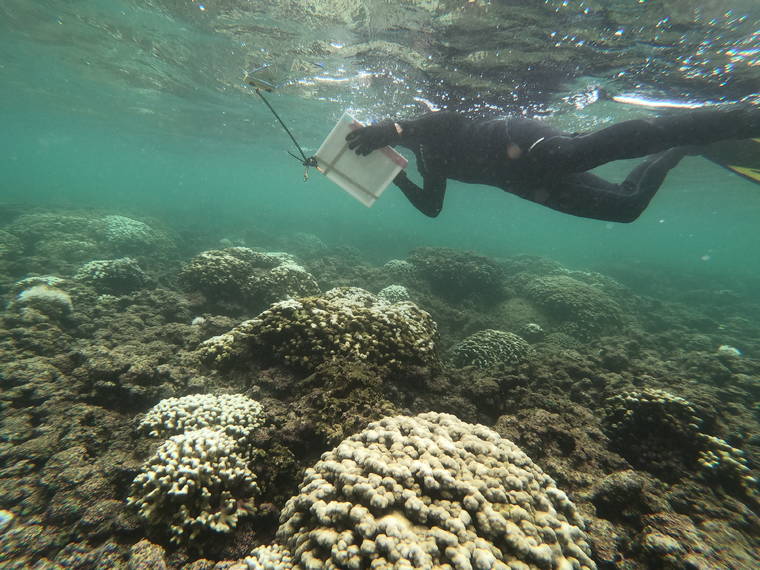KAILUA-KONA — A widespread coral bleaching event predicted by the National Oceanic and Atmospheric Administration did impact reefs around Hawaii. But the agency said the bleaching wasn’t as severe as predicted.
“Conditions for corals are now improving with sea surface temperatures beginning to drop,” said Gerry Davis with NOAA Marine Fisheries in a press release issued Tuesday by the state Department of Land and Natural Resources.
Davis added that while bleaching was not as devastating as the events in 2014 and 2015, there still was substantial bleaching.”
As much as half of live coral bleached in the most heavily affected areas.
For the past two months, teams from the DLNR Division of Aquatic Resources, NOAA, The Nature Conservancy, the Hawaii Institute of Marine Biology and the Arizona State University Center for Global Discovery and Conservation Science conducted rapid assessments of coral health along coral reef tracts around the state. They reported cauliflower and rice corals were most impacted.
Off Hawaii Island, the majority of the sites surveyed by the DAR teams showed some level of bleaching.
The areas most affected by the bleaching were along the Kona Coast, with an average of 40% live coral bleached in many survey locations.
Off Maui, surveys showed the amount of coral impacted was less than in 2014 and 2015.
At Lanikai in Windward Oahu, bleaching covered an estimated 55% of live corals. Also off Windward Oahu, survey teams looked at numerous patch reefs in Kaneohe Bay.
Kauai’s reefs mirrored the statewide trend, with extensive bleaching in some areas and less in others, said DAR aquatic biologist Kim Fuller.
The reefs along Molokai’s south shore were also surveyed and showed the same trend.

